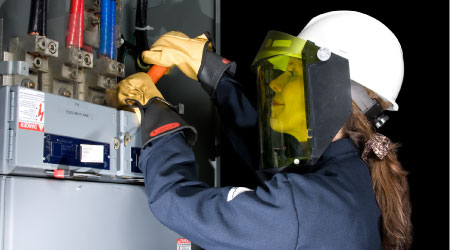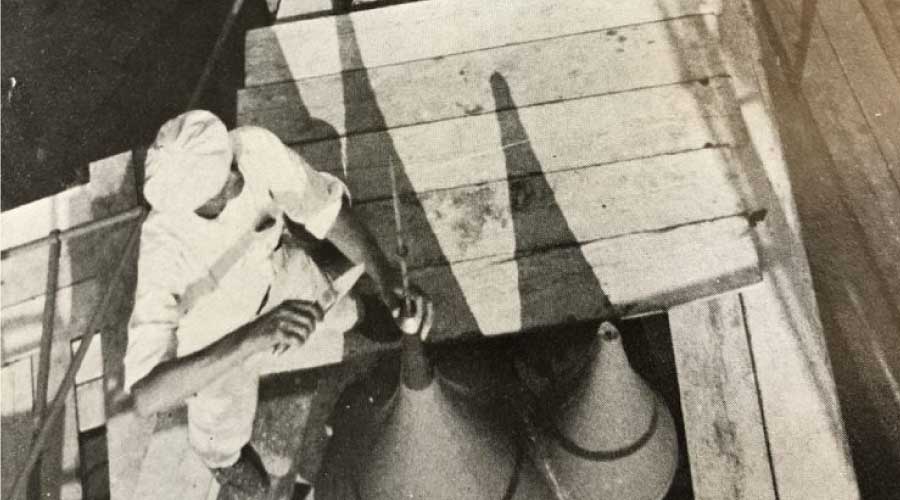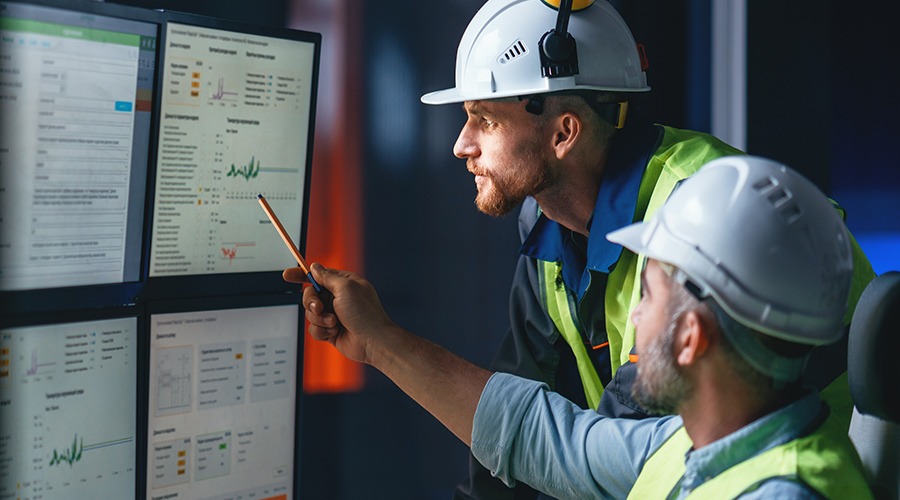Personal Protective Equipment: How to Select Products That Maximize Worker Safety
New-generation PPE for workers presents a range of challenges and opportunities for managers and their staffs.
By Dan Hounsell, senior editor
The role of personal protective equipment (PPE) in worker safety in facilities has become a high-profile topic of discussion nationwide in the last two years. The COVID-19 pandemic helped the general public understand that PPE – specifically masks, gloves and face shields – are critical equipment in protecting doctors, nurses and support staff in healthcare facilities from coming in direct contact with the coronavirus. Mask mandates helped the public understand that PPE also can protect them.
The crucial role of PPE was not news to maintenance and engineering managers, who have long understood just how critical the equipment is to keeping workers safe. But in this context, PPE also includes products designed to protect the hands, feet, faces and heads of front-line technicians maintaining facilities’ electrical, HVAC, and plumbing, as well as roofs and facades. New-generation PPE for these workers presents a range of challenges and opportunities for managers and their staffs.
What’s new
“PPE is constantly being updated, so something that was cutting edge 10 years ago and fantastic and worked perfectly has changed,” says Kristen Panella, CSP, owner of 2SafeConsulting. “What I find that in a lot of facilities is that managers stick to what they know as opposed to keeping up to date on what is out there and what's available to them.
“The options for PPE and the type and the materials that are made and how is a boot is laced and how safety glasses are reengineered changes on a consistent basis. Failure to stay up to date on the most cutting-edge PPE that's out there is one of the pitfalls of a maintenance manager.”
Not surprisingly, technology is having a tremendous impact on PPE products.
“The big thing that I've seen in the last few years has to do with smart PPE,” Paul Hart, CSP, senior consultant and director of health and safety services with CTEH, which provides occupational health and safety services. “What used to be a standard pair of safety glasses can now be integrated with your mobile device and allow additional zoom. Take hard hats, for example. There's a hard hat that will help provide real-time decision-making data analytics. There's even a hardhat that can assist with contact tracing for COVID-19. It'll track interactions.”
Magnifying the issue of worker protection in many facilities are arc-flash hazards related to electrical systems and components. Increasing arc flash awareness and prevention measures have paralleled greater compliance efforts by the U.S. Occupational Safety and Health Administration (OSHA). PPE for arch flash presents a unique set of challenges for managers.
"Managers can purchase safety glasses and hard hats in the construction industry and not have to be an expert in that type of material,” Panella says. “But when it comes to arc flash, managers have to pick the correct amount of the correct arc flash PPE that is required. It takes a little bit more expertise."
Avoiding mistakes
The critical role of PPE in facility maintenance and engineering, coupled with advances in PPE products, means managers face a daunting challenge of purchasing appropriate and effective products. Unfortunately, mistakes during the process are all too common.
"One mistake I really hate is that managers jump right to personal protection equipment,” Panella says. “I'm a big proponent of engineering controls, meaning, ‘We have a machine that's really loud. Here's some hearing protection.’ Well, that's a mistake. Is there a way that we can muffle the machine and have some sort of engineering control so we don't have to wear PPE? Nobody enjoys wearing PPE, and when you wear PPE, it limits you. If managers can be more intelligent and not just jump to PPE, that would be ideal.”
Managers who do not educate themselves on the nature of the hazards and the limits of PPE equipment also can create problems.
"Another mistake is picking the wrong PPE because they don't know the limitations of that PPE,” Panella says. “A good example would be a dust mask. A dust mask is extremely limited. It only protects you against dust. But in the field, guys are wearing dust masks for when they're spraying paint or around oil or something that smells really bad. They use an N95 respirator, which again is just for dust. That's a common mistake — not knowing the limitations of your protection equipment.”
Hart points out other common mistakes managers make in purchasing and using PPE:
Dismissing feedback. “An employee tells you, ‘My safety glasses keep popping up, and I have to take them off. I can't see.’ Don't just dismiss it as the employee doesn't want to wear their safety glasses. There may be a legitimate issue. Maybe try a solution like anti-fogging wipes. A little investigation into the issue can go a long way with helping the employees to be able to wear the PPE.”
Not reading instructions. “One example that I'm always amazed at is the way that you're supposed to insert an ear plug in your ear. It typically says on the package how to do it, but that's not how most people do it. Take the time to educate employees. Read the instructions on how to use the PPE.”
Not leading by example. “Sometimes you'll see managers give PPE to the employees, but they won't always lead by example and wear it themselves. That's a really important step is to lead by example when it comes to PPE.”
Strategies for success
Successful specification of PPE products involves several critical steps. Hart suggests managers start by becoming familiar with the OSHA standard on PPE.
"The OSHA rule basically lays out how to assess a hazard,” he says. “If you can't solve the problem with engineering or administrative controls, look at the hazards and organize what the potential impacts can be for the worker. Then choose the right PPE for the worker. There are things to consider, like comfort and fit and cleaning and maintenance and cost. All that starts with a survey of the workplace safety department and the employee.”
Panella suggests several key resources for managers looking to stay abreast of PPE product development and performance.
“What I do find that helps them out a lot and stay cutting edge are trade shows with PPE vendors,” he says. “They always have examples. They'll have different types of gloves, and they'll have different types of hard hats.
The other ones I find very helpful are the sales reps. Sales reps are invaluable in picking PPE because they aren't selling their products. They're selling 100 different types of products from a bunch of different vendors. They're pretty good allies in steering you in the right direction.”
The final component in successful PPE selection are those who stand to benefit the most – front-line technicians
"The technicians using the PPE need to be involved because they are the ones who are going to get hurt,” Panella says. “Nobody cares about their safety more than they do. It is in their best interest to make sure that the PPE they're wearing is the correct PPE. Let's say they're dealing with caustic material, and their manager gives them nitrile gloves. Unfortunately, they have to be knowledgeable enough to know that those are not acid-resistant gloves because again, they're the ones that are going to get hurt.”
Dan Hounsell is senior editor for the facilities market. He has more than 25 years of experience covering engineering, maintenance, and grounds management issues in institutional and commercial facilities.
Related Topics:












